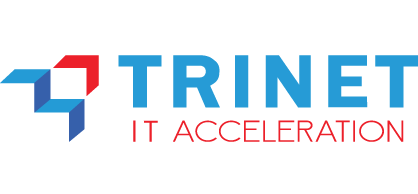Tech Innovation > Digital & IoT > Smart Building System

Smart Building System
Without this solution, organizations face the following challenges:
Inefficient Energy Usage
Without a Smart Building System, energy management becomes inefficient, leading to higher utility bills and wasted energy.
Limited Monitoring & Control
Without a Smart Building System, monitoring and controlling building conditions (lighting, HVAC, security) is manual and fragmented, reducing overall efficiency.
Delayed Response to Emergencies
Without a Smart Building System, emergency situations such as fires or security breaches may not be detected or responded to in real-time, increasing risks.

Key Features & Capabilities
Smart Building System optimizes energy use, automates controls, and enhances building management efficiency.
Show Details
a. IoT Sensors/Devices
Monitoring: Monitor temperature, humidity, occupancy, light levels, air quality, and energy usage.
Examples: Motion sensors, smart meters, CO₂ detectors.
Examples: Motion sensors, smart meters, CO₂ detectors.
b. Connectivity
Communication Protocols: Use of Wi-Fi, Bluetooth, Zigbee, or LPWAN to link devices and transmit data.
c. Centralized Management Systems
Data Aggregation: Platforms like Building Management Systems (BMS) or IoT cloud platforms aggregate and analyze data.
d. Automation & AI
Optimization: Machine learning algorithms optimize HVAC, lighting, and security systems.
e. User Interfaces
Interaction: Mobile apps or dashboards for occupants and facility managers to interact with building systems.

Business Benefits
Smart Building System enhances connectivity, automates systems, and optimizes energy usage efficiency.
Show Details
a. Energy Efficiency & Reduced Utility Costs
- Automated Systems: Smart HVAC, lighting, and appliances adjust in real time based on occupancy, weather, and usage patterns, slashing energy waste.
Example: Lights dim or turn off in unoccupied rooms, and HVAC systems avoid cooling/heating empty spaces. - Demand Response: Buildings integrate with smart grids to shift energy use to off-peak hours, lowering electricity bills.
- Renewable Energy Integration: IoT optimizes solar panels, battery storage, and grid interactions, reducing reliance on expensive fossil fuels.
b. Predictive Maintenance & Reduced Downtime
- Condition Monitoring: Sensors track equipment health (e.g., elevators, boilers, chillers) to detect issues like overheating or abnormal vibrations.
- Prevent Failures: Maintenance is performed only when needed, avoiding costly emergency repairs and unplanned downtime.
- Extended Asset Lifespan: Proactive care reduces wear and tear, delaying capital replacement costs.
c. Optimized Space Utilization
- Occupancy Sensors: Track room/desk usage to identify underutilized areas, enabling downsizing or reconfiguration.
- Hot-Desking: Reduce office footprint by 30% with dynamic workspace allocation, lowering rent and utility costs.
d. Lower Labor Costs
- Automation: Reduces manual tasks like adjusting thermostats, checking equipment, or managing security systems.
- Centralized Control: Facility managers monitor and control entire buildings from a single dashboard, minimizing staffing needs.
e. Sustainability Incentives & Tax Breaks
- Green Certifications: LEED or BREEAM-certified buildings qualify for tax credits, grants, and lower insurance premiums.
- Carbon Credits: Energy-efficient buildings can sell unused carbon credits in regulated markets.
f. Data-Driven Decision-Making
- Real-Time Analytics: Identify inefficiencies (e.g., energy leaks, overused areas) and prioritize cost-saving upgrades.
- Benchmarking: Compare performance across buildings or industries to adopt best practices.
g. Enhanced Tenant Satisfaction & Retention
- Personalized Comfort: Occupants control lighting, temperature, and air quality via apps, improving satisfaction and reducing tenant turnover.
- Healthier Environments: Air quality sensors and smart ventilation reduce sick days and boost productivity.
h. Scalability & Modular Implementation
- Phased Upgrades: Start with critical systems (e.g., lighting) and expand to HVAC, security, etc., spreading costs over time.
- Cloud-Based Solutions: Avoid upfront IT infrastructure costs with subscription-based IoT platforms.
i. Reduced Insurance Premiums
- Risk Mitigation: Smart fire detection, leak sensors, and security systems lower risks of damage, theft, or liability claims.
- Insurance Discounts: Insurers offer lower premiums for buildings with IoT-enabled safety systems.
j. Long-Term Asset Value Appreciation
- Future-Proofing: IoT-ready buildings attract premium tenants and buyers, increasing property value.
- Compliance: Meet evolving energy regulations (e.g., net-zero mandates) without costly retrofits later.

Use Cases
Smart Building System connects devices across industries, monitors performance, and enhances efficiency.
Show Details
a. Energy Management & Efficiency
Examples:
- Smart HVAC Systems: Sensors adjust heating/cooling based on occupancy, weather, or time of day.
Example: Automated thermostats reduce energy use by 30% in office buildings. - Intelligent Lighting: Motion-activated LED lights and daylight harvesting systems.
Example: Philips’ connected lighting saves 50–70% energy in warehouses. - Renewable Energy Integration: Solar panels and energy storage managed by IoT for grid balancing.
b. Occupant Comfort & Productivity
Examples:
- Personalized Climate Control: Employees adjust room temperature via mobile apps (e.g., Comfy).
- Air Quality Monitoring: CO₂ and VOC sensors trigger ventilation systems for healthier indoor environments.
- Noise Optimization: Acoustic sensors adjust background music or HVAC noise levels in open-plan offices.
c. Security & Safety
Examples:
- Smart Surveillance: AI-powered cameras detect unauthorized access or unusual activity.
Example: Amazon’s DeepLens for real-time threat detection. - Access Control: Biometric scanners or mobile-based entry systems (e.g., Kastle Systems).
- Fire & Gas Leak Detection: Early alerts via IoT smoke detectors and gas sensors (e.g., Nest Protect).
d. Space Utilization Optimization
Examples:
- Occupancy Sensors: Track desk/room usage to redesign layouts or implement hot-desking.
Example: Cisco’s smart offices cut real estate costs by 25% via space analytics. - Meeting Room Management: IoT-enabled booking systems display room availability and automate reservations.
e. Predictive Maintenance
Examples:
- Equipment Health Monitoring: Vibration/temperature sensors predict elevator or HVAC failures.
Example: Siemens’ Navigator platform reduces maintenance costs by 40%. - Plumbing & Electrical Systems: Detect water leaks or electrical faults before they cause damage.
f. Water Management
Examples:
- Smart Irrigation: Soil moisture sensors optimize watering for green spaces.
- Leak Detection: IoT valves shut off water supply during leaks (e.g., Phyn Smart Water Assistant).
g. Sustainability & Compliance
Examples:
- Carbon Footprint Tracking: IoT platforms monitor and report energy/water usage for ESG compliance.
- Waste Management: Smart bins signal when full, optimizing collection routes.
h. Disaster Resilience
Examples:
- Flood Detection: Sensors in basements alert managers during heavy rainfall.
- Earthquake Preparedness: IoT systems shut off gas lines or elevators during seismic activity.
i. Retail & Commercial Applications
Examples:
- Smart Shelves: Track inventory in real time and alert staff for restocking.
- Customer Experience: Beacons send personalized offers to shoppers’ phones based on location.
j. Healthcare Facilities
Examples:
- Patient Room Automation: IoT adjusts lighting, temperature, and alerts for bed availability.
- Asset Tracking: RFID tags locate medical equipment (e.g., wheelchairs, infusion pumps).
k. Educational Institutions
Examples:
- Smart Classrooms: Automated attendance systems, climate control, and interactive whiteboards.
- Campus Safety: Wearables for students to signal emergencies (e.g., Centercode).
l. Data-Driven Decision-Making
Examples:
- Centralized Dashboards: Platforms like IBM TRIRIGA or Schneider Electric’s EcoStruxure aggregate data for real-time insights.
- Digital Twins: Virtual models simulate building performance for optimization (e.g., Microsoft Azure Digital Twins).

How It Works
Smart Building System optimizes energy use, enhances comfort, and improves operational efficiency.
Show Details
a. Centralized Control System
- The Smart Building System integrates all building subsystems (lighting, HVAC, security, etc.) into a centralized control hub.
- This central system allows for seamless monitoring, control, and optimization of energy usage and building performance.
b. Intelligent Energy Management
- The system uses real-time data to manage and optimize energy consumption across the building, reducing overall energy costs.
- Automated energy-saving strategies, such as adjusting lighting and HVAC based on occupancy and time of day, are implemented to improve efficiency.
c. Automated Lighting & HVAC Control
- Smart sensors detect occupancy and environmental conditions, automatically adjusting lighting and temperature settings for comfort and efficiency.
- Energy-efficient settings are applied to reduce electricity consumption without compromising comfort.
d. Real-Time Building Monitoring
- Continuous monitoring of building systems ensures that potential issues (e.g., system malfunctions, energy inefficiency) are detected early.
- Real-time dashboards display building data for easy management and timely decision-making.
e. Predictive Maintenance
- Using IoT sensors and data analytics, the system predicts when equipment will require maintenance before it fails.
- This reduces downtime and maintenance costs by proactively addressing issues before they escalate.
f. Security & Access Control
- Smart security systems, including surveillance cameras and access control systems, enhance building security.
- Automated access controls ensure that only authorized personnel can enter restricted areas, improving safety and security.
g. Integration with IoT Devices
- The system integrates with IoT devices, such as smart thermostats, motion sensors, and air quality monitors, to enhance building automation.
- Real-time data from IoT devices is used to make intelligent decisions about lighting, energy consumption, and overall building efficiency.
h. Remote Access & Control
- The Smart Building System allows building managers to remotely monitor and control building systems from any device with an internet connection.
- This enables efficient management, even when on-the-go, ensuring that systems are always running optimally.
i. Environmental Monitoring & Sustainability
- The system monitors environmental factors, such as air quality, temperature, and humidity, to optimize comfort and health for building occupants.
- Data is also used to support sustainability efforts, reducing waste and maximizing energy efficiency to meet environmental goals.
j. Data Analytics & Reporting
- Advanced analytics tools process data collected from building systems to generate reports and insights for building managers.
- These insights help improve operations, optimize resource allocation, and enhance building performance over time.
k. Tenant & Space Management
- The system provides management tools for tracking space utilization, occupancy, and tenant preferences to improve building management.
- It offers space optimization recommendations and enhances tenant satisfaction through personalized settings and services.
l. Scalability & Customization
- The Smart Building System is highly scalable, allowing it to grow with the building or facility's needs.
- It can be customized to meet specific requirements, such as adding new systems, sensors, or IoT devices for additional capabilities.
Contact our experts for further information












